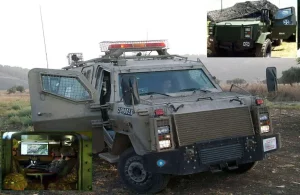Unpacking the Fallout of US Aid to Israel Amid Gaza Protests”
As President Joe Biden greenlights a jaw-dropping $10 billion aid package for Israel, questions linger about what exactly this hefty sum will entail. While the aid offer aims to fortify the Israeli defense, the fine print remains a well-guarded secret, leaving us to ponder the consequences of such unprecedented generosity, particularly in the midst of worldwide protests against Israeli attacks on Gaza, including the recent bombing of a hospital and a church.
This colossal assistance request, set to be scrutinized by Congress, sparks a plethora of inquiries. Is it exclusively earmarked for military upgrades, or will it encompass economic relief as well? If military-focused, does it entail cash or a shipment of cutting-edge weaponry? Moreover, the aid’s intended purpose, whether it’s an immediate bolster or a restocking maneuver, remains under wraps.
These funds amount to an astronomical sum, equivalent to three years’ worth of typical US military assistance. In fact, it nearly matches half of Israel’s annual security budget. This scale of assistance marks a stark contrast to the past, possibly unrivaled since the Yom Kippur War.
Dr. Sasson Hadad, who formerly advised the IDF chief of staff, highlighted in a 2021 article that Israel has reaped the most extensive foreign aid from the US since World War II. Over the years, this aid has reached a staggering $135 billion, with $100 billion devoted to military support. Prior to 1973, loans were part of the aid package, but since 1984, grants took precedence. Since 1999, long-term agreements have anchored economic assistance, and civilian aid gradually dwindled before vanishing.
As we recollect the most recent 2016 agreement, spanning from 2019 to 2028 and tallying approximately $38 billion per decade, it’s evident that this deal exceeded its forerunners. The annual aid allocation stood at $3.3 billion, with an extra $500 million allocated for the US-Israeli missile defense program, matched by Israel’s investments.
The logistics of procurement lie in the hands of the US. Spread over several years and subject to negotiations, this $10 billion grant could empower Israel’s acquisition of combat aircraft, perhaps even refueling jets, although caution is prudent in seizing this opportunity.
In past instances, Israel sought to economize by utilizing dollar aid for low-tech essentials, inadvertently undercutting the local industry. While progress has been made in this regard, exigencies occasionally prompt the preservation of shekels for salaries and industrial necessities. Low-tech procurement, therefore, continues to find funding from dollar aid.
The details of this procurement ride on Israel’s requests. Deals for aircraft, due to production schedules, typically span multiple years, potentially five. The big question mark hovers over the inclusion of Iron Dome missiles. Having fired several thousand of these missiles, with each one valued at hundreds of millions, their presence in the aid package is critical.
Historically, the US did not micromanage Israel’s procurement, but certain restrictions prevailed. The dominance of the dollar in aid funding led to economic imbalances in Israeli spending, prompting the US to limit the acquisition of various goods like food, construction materials, and, more recently, fuel.
A “New York Times” report hints at Senator Chuck Schumer’s proposed package for Israel, encompassing Iron Dome interceptor missiles, 155 millimeter shells, and precision-guided missiles.
The economic implications of this colossal aid package are significant. While it may not be unique, it’s undeniably substantial. This $10 billion represents approximately NIS 40 billion, a hefty chunk of the total defense budget of NIS 80 billion. Nonetheless, the size of the US economy dwarfs Israel’s, and it’s clear that the US is keen on aiding Israel as much as Israel is eager to receive help. In this unique situation, there’s no need for intense lobbying, as this aid serves mutual interests in confronting the Hamas challenge.
The impact on Israel’s defense industry is a pivotal concern. While Israel’s defense firms have benefited from the ability to convert 25% of US aid into shekels for the purchase of domestically developed technologies, this capacity is set to dwindle by 2028.
Collaboration between Israeli and US industries is a well-established practice. Although the order is placed with US companies, Israeli firms derive benefits, ensuring a degree of integration.
Management and oversight of this budget are primarily in American hands. With congressional committees closely monitoring the aid, the Pentagon directly handles payments to companies. This unique budget, managed by a US Ministry of Defense affiliate, follows a semi-political approval process, with Congress holding the final say.
The US State Department maintains a dedicated budget for military assistance, allocating funds strategically, and Congress’s approval is a prerequisite. The notion of Republican support for Israel holds, but given the unique scenario of a Democratic administration extending aid, approval hurdles are unlikely.
As the aid saga unfolds, the fine print remains shrouded in secrecy, leaving observers and policymakers pondering the consequences of this historic offering. The magnitude of this $10 billion commitment carries with it a web of uncertainties, urging us to contemplate its short and long-term ramifications on Israel’s defense and the broader geopolitical landscape in the midst of mounting global protests against Israeli actions, including the recent bombing of a hospital and a church in Gaza.






